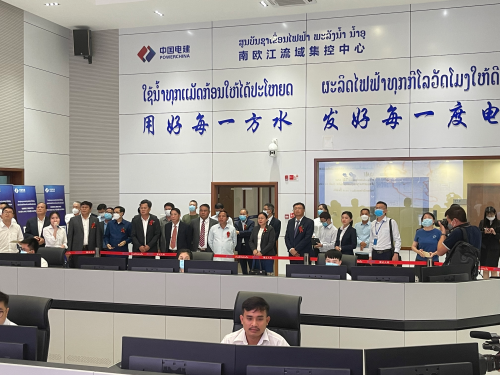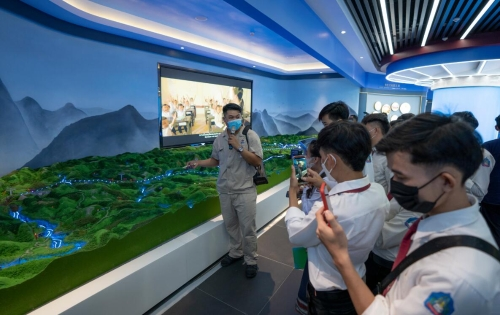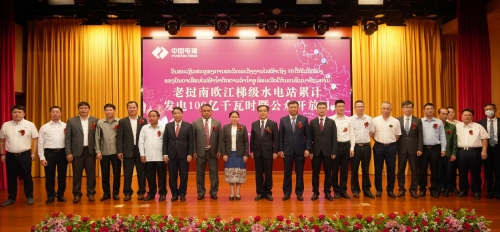The Power Construction Corporation of China (POWERCHINA) held an open day in its Nam Ou River cascade hydropower operation and maintenance center in Luang Praban of Laos on July 13. The event was meant to celebrate the 61th anniversary of China-Laos bilateral relations and show major achievements in cooperation on energy and electricity.

A delegation of Lao teachers, students and journalists visit the Nam Ou Cascade Hydropower Project during open day on July 13.
The Nam Ou River Cascade Hydropower Project sets a new record: It has generated electricity of over 10 billion kWh by the open day.
The open day attracted over 60 Lao teachers, students and media workers. They observed the project's operation and maintenance.

A delegation of Lao teachers, students and journalists visit the Nam Ou Cascade Hydropower Project during open day on July 13.
The visiting delegation were surprised to find out the project has successfully transformed water resource of the river into electricity for millions of Lao people. They spoke highly of POWERCHINA's efforts to build bridges and roads, participate in ecological conservation and support public welfare in Laos.

Group photo during the delegation's visit to the Nam Ou Cascade Hydropower Project open day on July 13.
Long Sen, a student from the Confucius Institute at Souphanouvong University, expressed thanks to POWERCHINA for inviting Laotian students to visit the project. It helps them acquire a better understanding of Chinese culture and enterprises, and personally experience the positive changes brought by the Belt and Road Initiative to the life of the Lao people.
The open day was attended by officials of the Chinese consulate in Luang Prabang, relevant Lao ministries and departments.
Li Zhigong, Chinese consul general in Luang Prabang, said that the project is a successful case of POWERCHINA participating in the cause of the Belt and Road Initiative with high quality.
The Nam Ou River Cascade Hydropower Project and Nam Ngum 5 Project can meet the annual demand of electricity supply across 12 percent of Laos. Their electricity generating capacity accounts for about 30 percent of demand in the dry season.